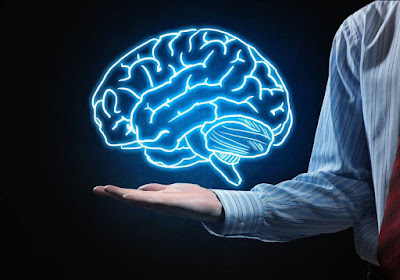Deep brain stimulation | Neurology 2018
https://neurology.cmesociety.com/
Deep brain stimulation (DBS) is a surgical procedure used to treat several disabling neurological symptoms—most commonly the debilitating motor symptoms of Parkinson’s disease (PD), such as tremor, rigidity, stiffness, slowed movement, and walking problems. The procedure is also used to treat essential tremor and dystonia. At present, the procedure is used only for individuals whose symptoms cannot be adequately controlled with medications. However, only individuals who improve to some degree after taking medication for Parkinson’s benefit from DBS. A variety of conditions may mimic PD but do not respond to medications or DBS. DBS uses a surgically implanted, battery-operated medical device called an implantable pulse generator (IPG) - similar to a heart pacemaker and approximately the size of a stopwatch to - deliver electrical stimulation to specific areas in the brain that control movement, thus blocking the abnormal nerve signals that cause PD symptoms.
Before the procedure, a neurosurgeon uses magnetic resonance imaging (MRI) or computed tomography (CT) scanning to identify and locate the exact target within the brain for surgical intervention. Some surgeons may use microelectrode recording - which involves a small wire that monitors the activity of nerve cells in the target area - to more specifically identify the precise brain area that will be stimulated. Generally, these areas are the thalamus, subthalamic nucleus, and globus pallidus. There is a low chance that placement of the stimulator may cause bleeding or infection in the brain.
The DBS system consists of three components: the lead, the extension, and the IPG. The lead (also called an electrode)—a thin, insulated wire—is inserted through a small opening in the skull and implanted in the brain. The tip of the electrode is positioned within the specific brain area.
The extension is an insulated wire that is passed under the skin of the head, neck, and shoulder, connecting the lead to the implantable pulse generator. The IPG (the "battery pack") is the third component and is usually implanted under the skin near the collarbone. In some cases it may be implanted lower in the chest or under the skin over the abdomen.
Once the system is in place, electrical impulses are sent from the IPG up along the extension wire and the lead and into the brain. These impulses block abnormal electrical signals and alleviate PD motor symptoms.
Unlike previous surgeries for PD, DBS involves minimal permanent surgical changes to the brain. Instead, the procedure uses electrical stimulation to regulate electrical signals in neural circuits to and from identified areas in the brain to improve PD symptoms. Thus, if DBS causes unwanted side effects or newer, more promising treatments develop in the future, the implantable pulse generator can be removed, and the DBS procedure can be halted. Also, stimulation from the IPG is easily adjustable—without further surgery—if the person’s condition changes. Some people describe the pulse generator adjustments as "programming."
Although most individuals still need to take medication after undergoing DBS, many people with Parkinson’s disease experience considerable reduction of their motor symptoms and are able to reduce their medications. The amount of reduction varies but can be considerably reduced in most individuals, and can lead to a significant improvement in side effects such as dyskinesias (involuntary movements caused by long-term use of levodopa). In some cases, the stimulation itself can suppress dyskinesias without a reduction in medication. DBS does not improve cognitive symptoms in PD and indeed may worsen them, so it is not generally used if there are signs of dementia. DBS changes the brain firing pattern but does not slow the progression of the neurodegeneration.
Treatment
Unlike previous surgeries for PD, DBS involves minimal permanent surgical changes to the brain. Instead, the procedure uses electrical stimulation to regulate electrical signals in neural circuits to and from identified areas in the brain to improve PD symptoms. Thus, if DBS causes unwanted side effects or newer, more promising treatments develop in the future, the implantable pulse generator can be removed, and the DBS procedure can be halted. Also, stimulation from the IPG is easily adjustable—without further surgery—if the person’s condition changes. Some people describe the pulse generator adjustments as "programming."
Although most individuals still need to take medication after undergoing DBS, many people with Parkinson’s disease experience considerable reduction of their motor symptoms and are able to reduce their medications. The amount of reduction varies but can be considerably reduced in most individuals, and can lead to a significant improvement in side effects such as dyskinesias (involuntary movements caused by long-term use of levodopa). In some cases, the stimulation itself can suppress dyskinesias without a reduction in medication. DBS does not improve cognitive symptoms in PD and indeed may worsen them, so it is not generally used if there are signs of dementia. DBS changes the brain firing pattern but does not slow the progression of the neurodegeneration.




Great Information. Yeah, According to research Deep Brain Stimulation is a neurosurgical intervention that involves implanting electrodes into the brain to deliver stimulation with the aim of improving motor performance and quality of life in people with Parkinson’s disease. I admire doctors that take pride in there work and helping to improve people life's. Thank you.
ReplyDelete